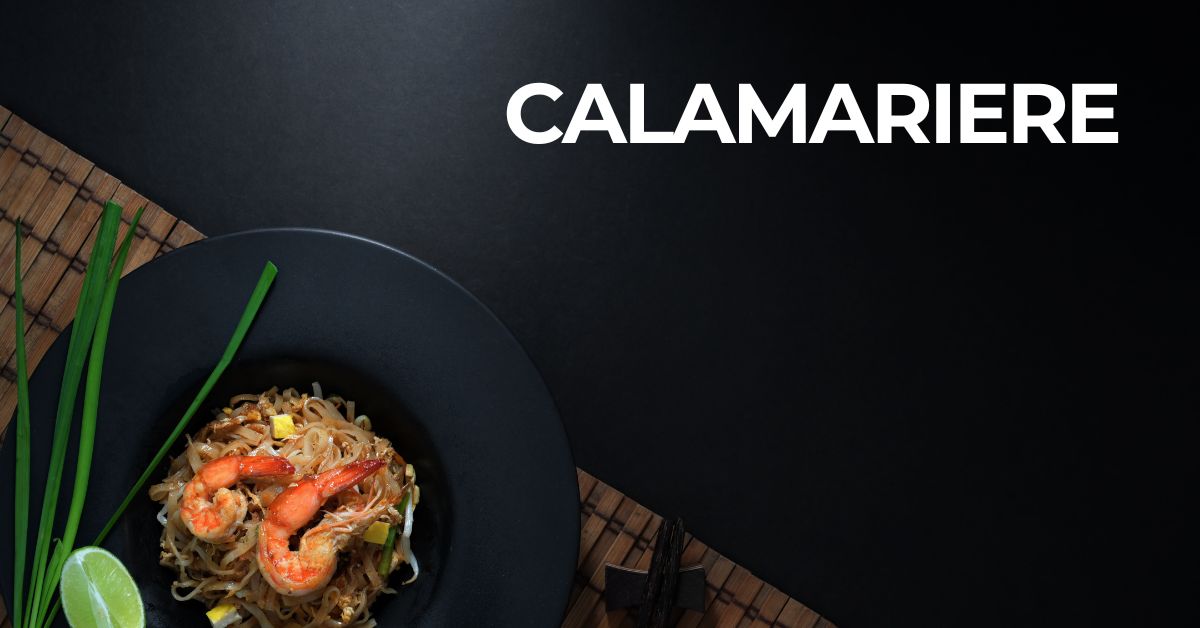The word “Calamariere” isn’t found in every kitchen dictionary, but in coastal cultures and seafood-loving communities, it resonates deeply. It typically refers to someone who specializes in preparing calamari—those deliciously tender squid dishes many of us adore at seaside restaurants. From classic Mediterranean recipes to modern twists, the role of a calamariere is both artisanal and essential in preserving this unique cuisine.
Origin of the Term ‘Calamariere’
The term likely has Italian roots, derived from “calamaro” (squid) and possibly adapted to describe someone who works specifically with squid. In Mediterranean regions, seafood plays a central role, and specific terms emerged for cooks specializing in different catches. The calamariere became known for not just cooking squid but mastering its every detail—from cleaning to seasoning.
The Art of Preparing Calamari
Preparing calamari isn’t just about frying rings in oil. It begins with sourcing the freshest squid, usually caught early in the morning. A calamariere carefully cleans and separates the tentacles, wings, and body, ensuring there’s no leftover cartilage or ink unless required by the recipe. Each step is precise, enhancing both taste and texture.
Different Types of Calamari Dishes
A calamariere might create a wide range of dishes, depending on regional preferences and techniques. Fried calamari, stuffed squid, grilled calamari with lemon, and calamari stews are just a few of the many variations. In Greece, for example, calamari is commonly served grilled with oregano and olive oil. In Spain, it’s often part of paella or served as tapas.
Regional Calamariere Traditions
In Italy, particularly along the Amalfi Coast, a calamariere might prepare stuffed calamari using breadcrumbs, garlic, parsley, and anchovies. Meanwhile, in the Philippines, adobong pusit—a squid stewed in vinegar and soy sauce—highlights another cultural interpretation. Each region where squid is common has developed its own calamari traditions, and the local calamariere is often the custodian of that flavor heritage.
Why Freshness Matters Most
Fresh squid is tender, mildly sweet, and easy to cook. However, if it’s not handled properly or is too old, it becomes rubbery and unpleasant. A skilled calamariere knows how to judge the texture, smell, and appearance of squid instantly. This knowledge ensures the dish served is of the highest quality.
Essential Tools of a Calamariere
Much like a sushi chef has a special knife, a calamariere also uses specific tools: sharp filleting knives, seafood scissors, tweezers for pin bones, and often a cast-iron pan or deep fryer for traditional dishes. Presentation tools like squid ring molds and plating tongs also play a part in the kitchen ritual.
Cleaning and Prepping Techniques
The cleaning process is almost ceremonial. A calamariere removes the beak, internal organs, and ink sac with extreme care. Some dishes require the ink to be preserved, while others need the meat to be as white and pure as possible. Slicing techniques—diagonal, crosswise, or whole—also depend on the recipe.
Cooking Calamari: Timing Is Everything
Perhaps the most crucial thing in calamari cooking is timing. Squid cooks quickly—either under 2 minutes or over 30 minutes. Anything in between often results in a chewy mess. That’s why a calamariere is trained to work fast, constantly monitoring the pan and adjusting the temperature on instinct.
Modern Fusion and the Calamariere
While calamari has traditional roots, the modern calamariere isn’t afraid to experiment. Think calamari tacos with mango salsa, squid ink pasta topped with truffle oil, or calamari burgers with aioli. These modern twists appeal to younger audiences while preserving the core flavors of the sea.
Pairing Calamari with the Right Accompaniments
Whether it’s a glass of chilled white wine or a crisp side salad, pairings matter. A calamariere understands flavor profiles and balances saltiness, acidity, and spice accordingly. For example, fried calamari is often served with lemon wedges and marinara sauce, enhancing both tang and sweetness.
Sustainable Squid Sourcing
Responsible sourcing is a growing priority in the culinary world. A dedicated calamariere ensures the squid used comes from sustainable fisheries. Overfishing threatens many marine species, and awareness of where and how seafood is caught matters more now than ever.
Training to Become a Calamariere
There’s no official degree in becoming a calamariere, but culinary schools with seafood courses often provide the foundation. Apprenticeship under a seasoned chef and years of hands-on experience are usually what shape a skilled calamariere. It’s an art honed by passion, patience, and a love for the sea.
Cultural Significance of Calamari Dishes
In many cultures, calamari dishes are served during festive seasons, coastal weddings, and religious holidays. They symbolize prosperity, abundance, and coastal pride. A calamariere is not just a cook—they’re a cultural ambassador through cuisine.
Home Cooking Like a Calamariere
You don’t need to be a professional chef to try your hand at calamari. Simple recipes like garlic butter calamari or crispy fried rings are beginner-friendly. The key is preparation. Follow the methods of a calamariere—clean well, cook quickly, and don’t overcomplicate it.
Conclusion
The term “calamariere” might not be common in everyday conversations, but the role it represents is rich in heritage, flavor, and skill. Whether steeped in Mediterranean tradition or pushing culinary boundaries in fusion kitchens, the calamariere is a master of squid cuisine. Their hands tell the story of the sea, and their dishes bring its magic to our plates. Next time you enjoy calamari, remember—there’s an artist behind that tenderness and flavor.
FAQs
What does a calamariere do?
A calamariere specializes in cleaning, preparing, and cooking squid dishes, often with deep knowledge of traditional and modern techniques.
Can anyone become a calamariere?
Yes, with dedication, training, and passion for seafood, anyone can learn the art of being a calamariere.
What’s the biggest mistake people make when cooking calamari?
Overcooking. It becomes rubbery if not cooked quickly or properly stewed for a long time.
Is squid ink used in calamari dishes?
Yes, squid ink adds a rich, briny flavor and is used in recipes like squid ink pasta or sauces.
Are calamari dishes healthy?
Absolutely. Squid is low in fat and high in protein, especially when grilled or sautéed instead of deep-fried.




